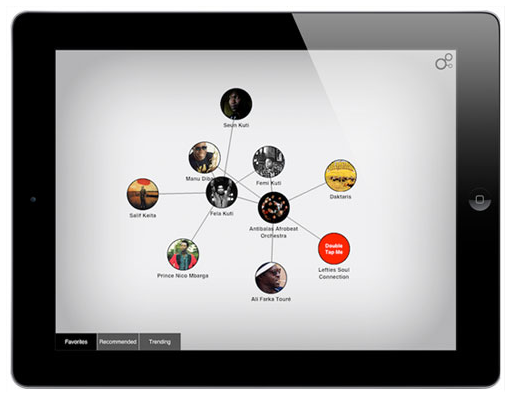Table Of Content
- Pros and Cons of Halfway Houses
- Other Addiction Treatment in California
- What services do halfway houses provide for residents?
- What services are offered in Sober Living homes in California?
- When should you consider a Halfway House in California?
- Our Common Ground Inc Recovery Residence - Redwood City, CA

If a facility has a no-cellphone policy, residents will have to leave their cell phones with the management and get them back only when they move out. In several halfway houses, visitors can have video visits with the residents using their own mobile devices or computers. Children can also communicate with the resident without having to go to the facility physically. That being said, visitors are allowed in halfway houses at scheduled times.
Pros and Cons of Halfway Houses
It is important for halfway houses to strike a balance between providing structure and support for residents while also promoting their independence and autonomy. Ultimately, the optimal length of stay in a halfway house will depend on an individual’s specific needs and goals, as well as their ability to successfully navigate the challenges of reintegration into society. However, like any other type of intervention, halfway houses come with their own set of pros and cons. In this article, we will explore the benefits of halfway houses as well as the safety concerns that come with them. We will also discuss funding and resource challenges that impact their effectiveness in meeting the needs of residents. A halfway house or sober house, is a place where people recovering from addiction begin the process of reintegration with society, while still providing monitoring and support.

Other Addiction Treatment in California
For example, some halfway houses are geared towards people leaving prison, while others may be intended for people who have finished an inpatient drug rehab program. There are also halfway houses for people with mental health issues or for people who are homeless and need support getting themselves on their feet again. If you or your loved one have completed an inpatient drug rehabilitation program and are considering joining a halfway house, find out if there are any halfway houses near you for people trying to achieve sobriety.
What services do halfway houses provide for residents?
"Our hearts break for the family, loved ones and law enforcement colleagues of Deputy Tobin Bolter," Little said. "Day in and day out, our brave men and women in blue put themselves in harm's way to protect us and keep our communities safe. Idaho is grieving this devastating loss." DeWine has ordered that the U.S. and state flags be flown at half-staff at all Ohio Department of Transportation facilities until the day of his funeral, on April 30. On that day, the flags on all public buildings and grounds in Licking County, at the Ohio Statehouse, the Vern Riffe Center and Rhodes State Office Tower will also be lowered. The RRM will contact the referring institution' s CMC and request the recommended modification be considered . The CMC will facilitate the Warden's review of the request and advise the RRM accordingly.
They offer a middle step for people who are committed to sober living but aren't ready to live independently. Depending on your needs, you can live in a halfway house for a few weeks or months. In certain areas, a halfway house is much different from a recovery house or sober house. In these areas, a drug and alcohol halfway house is licensed by the Department of Health and has staff coverage 24 hours a day.
Jacksonville man sentenced to federal prison for escaping from halfway house - Yahoo! Voices
Jacksonville man sentenced to federal prison for escaping from halfway house.
Posted: Sun, 28 Apr 2024 17:50:31 GMT [source]
While it isn’t common for a newly sober person to live at a halfway house, it isn’t impossible. Someone committed to sobriety can check their local halfway house about any specific recovery milestones that might be recommended before residency. The good news is that because halfway houses are government-funded, many insurance companies (especially Medicaid under the Affordable Care Act) will cover the cost of your stay. Some halfway house residents might be there because the court has required it as part of a sentence.
Halfway Houses vs. Sober Living Homes
However, research shows that halfway houses do not disrupt their communities and have little impact. Some recovering addicts may struggle with too much freedom and need more of a residential rehab center’s structure. Every halfway house will have its own unique rules, but these rules are relatively common among halfway homes. Residents can leave to attend work, family obligations, religious observation, 12-step meetings, etc. Residents can expect random drug testing or alcohol screening to show that they are still sober. Rehab programs are also available at different levels, from inpatient treatment to a few outpatient recovery programs.
When should you consider a Halfway House in California?
During that time, he focused much of his attention on the fair treatment of the elderly, going undercover in nursing homes from 1966 to 1973, and uncovering bad practices. Graham joined the Florida House of Representatives in 1966 and became a member of the Florida Senate in 1970. He served three terms as a U.S. senator and made an unsuccessful bid for the 2004 Democratic presidential nomination.
Our Common Ground Inc Recovery Residence - Redwood City, CA
Before selecting one, determine whether or not the facility meets your unique needs. At Ocean Recovery, we have relationships with some of the best sober living homes in the area and can help place you in the facility that is the best fit for your needs and goals. Halfway houses are government-funded programs for former criminals and recovering addicts. While halfway houses are utilized in the criminal justice system, they are not only for former prisoners.
It is important to note that each halfway house will have its own set of regulations that visitors must abide by. Visiting regulations at halfway houses are primarily put in place for safety purposes. These regulations ensure that residents are not put in harm’s way by any substance or environment.
Generally, the cost of living at a halfway house ranges from $100 to $2,000 per month. Most facilities with basic amenities cost about $400 to $800 per month, depending on their geographic region. Also note that in some states (e.g., Texas), halfway houses only serve parolees.13 So it may be helpful to note how your state defines the term before you consider a halfway house as a recovery option. If you, or a loved one, were originally approved for a certain amount of halfway house--only to have that original release date stripped away--you have a few options. These media reports are too often the only way we are able to retrieve public information about the internal conditions of halfway houses.
Private halfway houses may be focused on individuals exiting particular addiction treatment programs. Halfway houses offer a variety of support services.[3] While there is a good amount of variation between houses, most have a trained and diverse staff available to help residents. A house manager may be responsible for daily operations and enforcing house rules. Some halfway houses have licensed healthcare workers who can administer necessary medications and address other health concerns of residents.
Our quarterly newsletter reminds you that others have gone down this path and can provide valuable support. No matter where on your journey – considering sobriety, living sober for years or months already – our newsletter is here as a guide with helpful resources, events, and more. If a resident violates the rules of a halfway house, consequences may range from a warning to eviction from the facility. The specific consequences may depend on the severity of the violation, as well as facility policy.
Most halfway houses don’t restrict who can live there, but the majority of people who live in a sober living home have already gone through a treatment program before going to sober living. This is mostly due to the fact that halfway houses require you to remain sober while you live there. Therefore, people who already have some level of sobriety under their belt are more likely to succeed at a halfway house than those who are new to recovery. Halfway houses and sober living homes ease people from inpatient treatment to independent living. The differences between halfway houses and sober living homes depend on the specific facilities.
However, some facilities do allow residents to leave for work or other approved activities. This can be an important aspect of community integration, allowing residents to maintain employment and other connections outside of the facility. Halfway houses, like other recovery and sober-living houses, are intended to gently reintroduce tenants back into society, free from the pressures and triggers of a potentially dangerous home environment.























